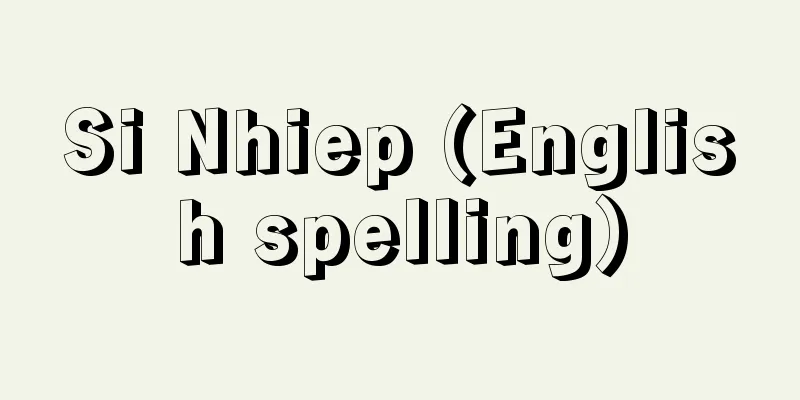Jingasa - Jingasa

|
It is the name of a hat used in battlefields. In the Middle Ages, examples of high-ranking military commanders using ayai-gasa (woven hat) or uchidashi (woven hat) during battles can be seen in the Gosannen Kassen Emaki (Picture Scroll of the Battle of Gosannen), Zenkunen Kassen Emaki (Picture Scroll of the Battle of Zenkunen), and Genpei Seisuiki (Record of the Rise and Fall of the Genpei). Documents from the Warring States period state that foot soldiers were made to wear leather hats. In general, it refers to painted hats made of leather or metal with no curved edges, used by foot soldiers and foot soldiers as a substitute for helmets from around the Warring States period. It is thought that these were used in large quantities in combination with simple, inexpensive foot soldiers' armor. They were often painted black or vermilion, and had family crests or seals painted on the front, which also served as a sign of the group to which they belonged. The Nirayama hat, which was widely worn by peasant soldiers and others during the late Edo period, was also a type of jinbasa. In addition, in the early modern period, the term also referred to large lacquered hats with a curved edge that resembled a single-character hat, worn by high-ranking samurai during military service, for emergencies such as fires, and for normal outings such as long distances. Some of these hats had sujigane or hachiman seats, and were high-quality hats with gold and silver foil embossed on the inside, hammered lacquer, or vermilion lacquer, and a family crest painted on the front. [Shinichi Saito] A gun-wielding foot soldier wearing a battle hat. "Zappyo Monogatari" (Tales of the Zohei), published in 1846 (Koka 3), held at the National Diet Library . Foot soldier's battle hat Source: Shogakukan Encyclopedia Nipponica About Encyclopedia Nipponica Information | Legend |
|
戦陣所用の笠の称である。中世には上級の武将が綾藺笠(あやいがさ)や打出しの笠を戦時に用いた例が、『後三年合戦絵巻』や『前九年合戦絵巻』『源平盛衰記』などにみえる。戦国時代の文献には、足軽に革笠をつけさせたとある。一般には、戦国時代ごろから足軽、雑兵(ぞうひょう)の用いた端に反りのない革製あるいは金属製で、兜(かぶと)の代用としての簡略な防具である塗り笠をさす。これは簡便、安価な雑兵用の具足(ぐそく)と組み合わされて多量に用いられたものと思われる。黒塗りや朱塗りが多く、正面に定紋や合印(あいじるし)などを描き、所属の集団の標識ともした。また幕末に農兵隊などに広く着用された韮山(にらやま)笠なども一種の陣笠である。別に、近世、上級の武士の軍役、出火などの非常用や通常の遠行などの外出用としての大ぶりで、一文字笠風で端に反りのある塗り笠をも称した。これは筋金(すじがね)や八幡(はちまん)座などをつけたりするものもあり、裏を金銀の箔(はく)押し、たたき塗り、朱塗りなどとし、正面に定紋を描いた上等の笠である。 [齋藤愼一] 陣笠をかぶった鉄砲足軽。『雑兵物語』 1846年(弘化3)刊国立国会図書館所蔵"> 足軽の陣笠 出典 小学館 日本大百科全書(ニッポニカ)日本大百科全書(ニッポニカ)について 情報 | 凡例 |
Recommend
Mons Sacer
A hill located about 5km northeast of Porta Collin...
Egyptian opithecus
...The former is in a transitional position betwe...
Uruka
Shiokara made from sweetfish. It is mainly made f...
Paint - Paint
Color materials used for painting. From ancient ti...
Frank Wedekind
German poet and playwright. Born in Hanover. The ...
Sibiu (English spelling)
Sibiu is the capital of Sibiu County (area 5,422 k...
Christian Art - Christ Today Art
It refers to all art related to Christianity. It ...
Culture film
Grierson established the foundation of this movem...
Khiva (English spelling)
A city in the Khorezm region of western Uzbekistan...
Population census - jinkochousa (English spelling) survey of population
A census is a complete survey conducted to create ...
Blagoev
1856‐1924 Bulgarian politician. Born into a poor p...
Rain gear - Amagu
A general term for clothing and tools used in the...
Confectionery stamps - Kashi no Kitte
...Soba stamps probably started around the end of...
Stuart, J.
In the 1890s, the world was divided into two comp...
Nurhaci (English spelling)
1559‐1626 The first emperor of the Qing Dynasty in...









